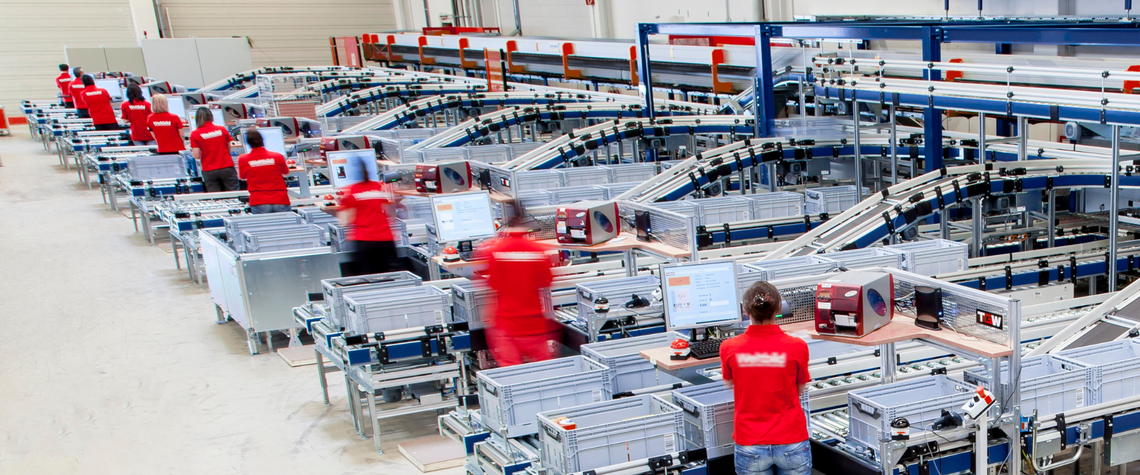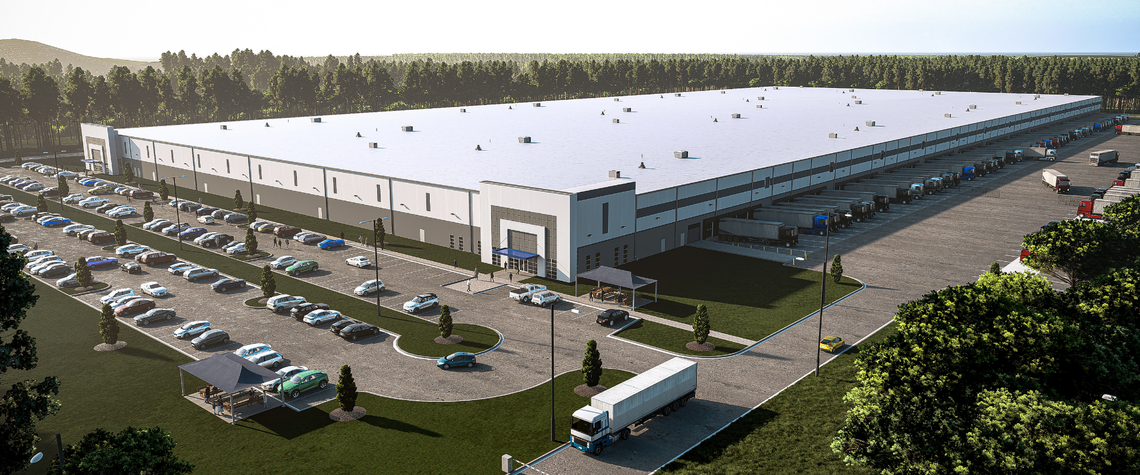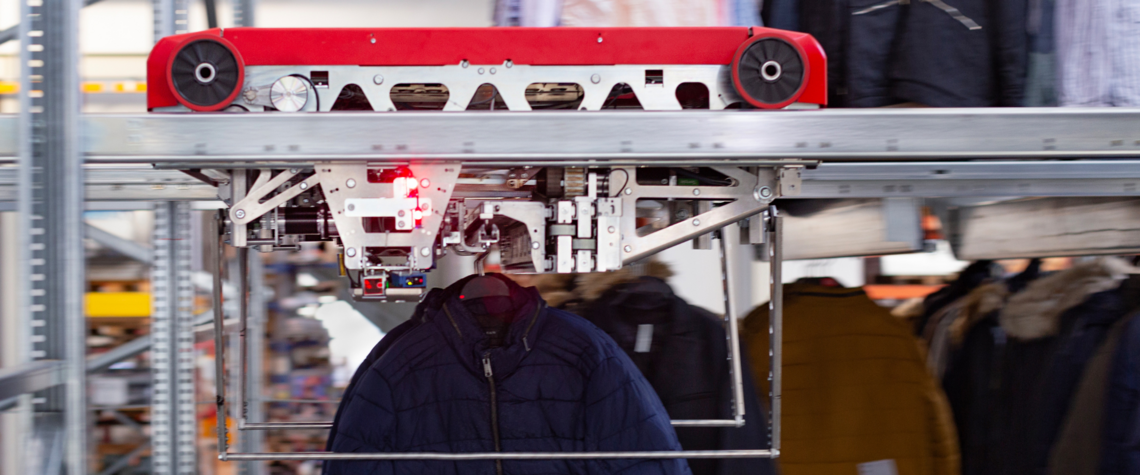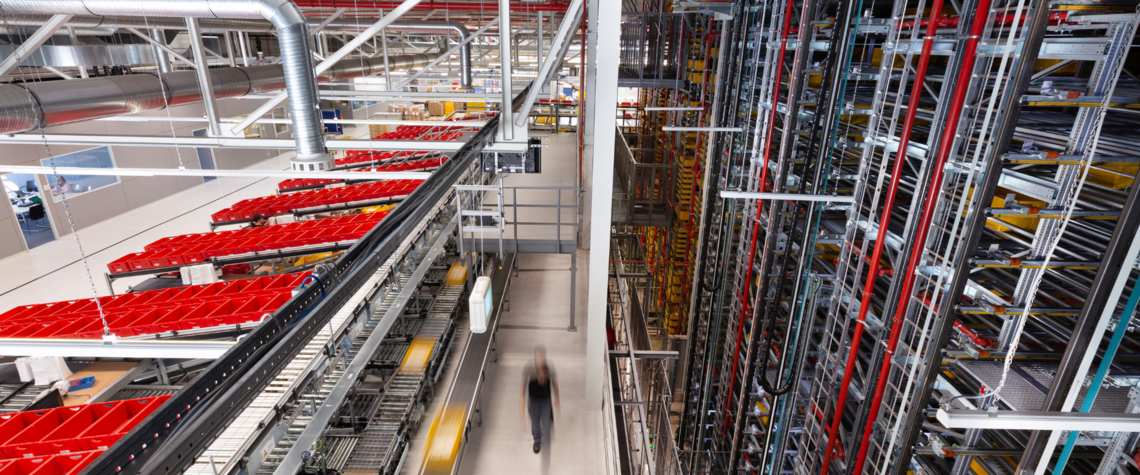

Designing Goods-to-Person Systems for Scalability: From Small to Large Operations
Many warehouses begin their journey to full automation by implementing goods-to-person (GTP) systems. Essential to safe, efficient, and accurate material handling, GTP solutions eliminate the need for workers to retrieve goods from storage for manual picking. Instead of requiring employees to spend most of their time walking, this process allows them to stay put and have the goods come to them. Automated equipment delivers totes or cartons from their storage area to stationary picking workstations, where pickers use screens armed with order information and accuracy warning lights to select the correct goods. Then, the receptacles are returned to where they came from.
Why goods-to-person automation? Its potential for scalability, for one. While a great automation partner will fit solutions to your current needs, they’ll also prioritize flexible design to make room for future growth. In fact, automation itself will make that growth possible. By freeing workers from the duty of retrieving goods for fulfillment purposes, your facility will increase labor efficiency, decrease the risk of picking errors and product damage, and experience higher throughput overall.
Challenges of Scaling Operations Without Automation
Manual fulfillment systems are much less capable of accommodating continual growth and high-volume periods without snags and bottlenecks. In today’s fast-paced and varying e-commerce space, volume spikes and viral demand can be challenging to predict and plan for. Old-school, hands-on systems struggle to keep up when one of these spikes hits or your business significantly expands its SKU offerings. That’s one of the reasons Grand View Research projects that the warehouse automation market will reach nearly $60 billion in spending by 2030.
Relying on manual labor to retrieve goods is particularly risky in the busiest times. Higher demand can lead to costly mistakes, such as improper handling. According to OSHA, some of the most common workplace injuries in warehouses are “musculoskeletal disorders mainly from overexertion in lifting and lowering,” making product retrieval the main culprit. And where mishandling is a risk, product damage is also a significant concern. Without automation, facilities often see material handling gridlock, making it impossible to keep up with the fast shipping expectations of today’s consumer base.
Additionally, picking mistakes become more frequent in busy periods, requiring expensive re-packing and/or re-shipping. Hiring additional workers to manage fulfillment also means increased labor costs.
Scaling up operations in a manual warehouse can be dangerous and costly, plus its throughput speed will never rival that of an automated facility. Meanwhile, thoughtful logistics planning empowers phased upgrades and continual growth of warehouse automation solutions. It’s an investment in the present and the future.
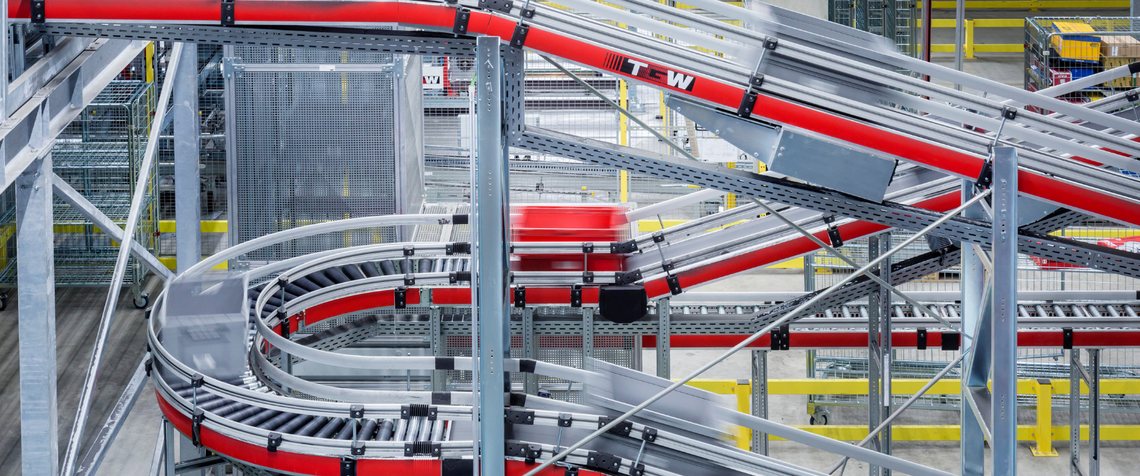

Key Components of Scalable Goods-to-Person Systems
Equipment and software are crucial in scalable GTP systems that encourage and accommodate growth. Learn how TGW Logistics integrates shuttles, robotics, automated storage and retrieval systems (ASRS), and software into limitlessly scalable designs. Our experts can help you discover your ideal tech stack.
As your storage demands change, the right automation can unlock density, speed, and adaptability. TGW Logistics offers two intelligent systems, FlashPick and LivePick, that deliver scalable, goods-to-person fulfillment from different angles.
FlashPick integrates high-performance shuttles, sequencing conveyors, and ergonomically optimized picking stations. This solution excels in high-throughput operations where speed and precise sequencing are critical. Shuttles retrieve totes and route them via smart conveyor buffers, ensuring that every pick station stays productive without overload or delay.
LivePick takes a different approach. It uses mobile robots to navigate ultra-narrow aisles up to 12 meters tall, retrieving and transporting totes or cartons directly to picking stations, without any need for fixed conveyor infrastructure. This allows for exceptionally dense storage in a smaller footprint and offers configuration flexibility as your operation evolves.
Both systems support phased expansion and integrate with TGW Logistics’ proprietary software for real-time control and analytics.
In FlashPick systems, conveyors do more than move product; they orchestrate it. Sequencing conveyors intelligently stage totes so that pick stations never sit idle, even under peak loads. That rhythm enables incremental throughput gains and reduces strain on labor resources.
By pairing robotics and conveyors with smart logic, FlashPick enables your warehouse to adapt to order volume changes without bottlenecks. And since LivePick eliminates the need for conveyors entirely, it’s equally suited to operations seeking layout flexibility without compromising performance.
Whether you’re prioritizing density, speed, or operational flexibility, TGW Logistics’ GTP systems give you room to grow—without hitting pause.
Software integration pulls the puzzle pieces of automation together and makes smooth scaling across sites and volumes not only possible but virtually effortless. Your warehouse management system (WMS) communicates with your automation equipment to optimize efficiency, track inventory, and automate workflows. A warehouse execution system (WES) offers real-time visibility of equipment and processes, empowering managers to make necessary tweaks, identify areas that may become future problems, and keep a handle on maintenance needs.
Industry Use Cases for Scalable Goods-to-Person
Flexible automation design is future-proofing warehouses across a range of industries, especially those that need dynamic, reprogrammable solutions.
In the retail and consumer goods arena, facilities must be ready for predictable peak seasons such as back-to-school and unexpected rises in demand driven by trends, influencers, or pop culture. Scalable goods-to-person systems enable retail and consumer goods facilities to ramp up processes during those periods, whether it’s a rush they’ve been able to plan for or one they’ve had to respond to quickly, without experiencing bottlenecks or picking errors. A flexible system is also handy when a warehouse takes in a broader SKU variability.
Meanwhile, grocery facilities and cold chain warehouses have the added challenge of meeting federal and local safety guidelines and limiting food spoilage. When handling perishable products or those that must be kept at different temperatures at different points in the handling process, efficient throughput is a must.
The automotive, appliance, and other spare parts industries are also complicated. Dealing with a broad range of highly specialized products that are always being added to (parts must be kept on hand for every new product and the back catalog) requires modular material handling systems and flexible storage configurations. Industrial logistics also prioritizes GTP automation to safely move products of all sizes and ensure accurate picking of a high SKU variety.
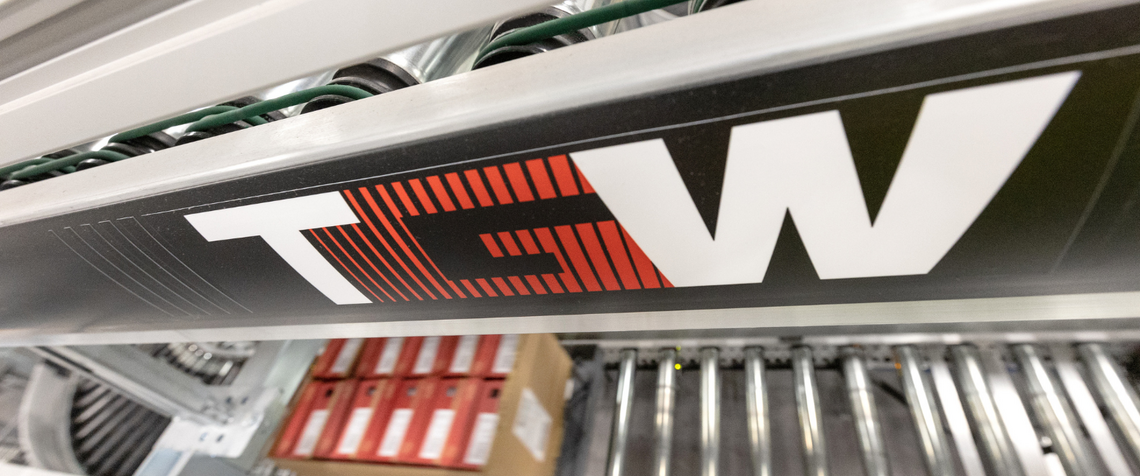

TGW Logistics Approach to Right-Sizing
TGW Logistics is your trusted partner for holistically auditing your current systems and designing automation solutions that address your current needs. They are primed to be scaled up to meet new challenges. Modular hardware and flexible software support cost-effective scaling for increased efficiency, optimized storage, and more intelligent allocation of human labor.
Critically, TGW Logistics’ support lasts a lifetime—not just until your new automation solutions go live. Our lifetime logistics services guarantee long-term adaptability and that your systems will always perform at an optimal level. A solid post-automation operations plan must involve maintenance and system management, as well as tools and staff training.
Proactive maintenance, including scheduled service and real-time monitoring, prevents costly and frustrating shutdowns. TGW Logistics offers lifecycle upkeep for automation equipment and ongoing software support, as well as managing upgrades, security updates, integrating new features, and more.
Advanced digital tools empower operations staff to visualize and test changes and upgrades before fully implementing them, eliminating much of the stress in scaling up. High-tech modeling and virtual testing identify potential issues before they occur and streamline upgrades as they’re planned, not after. Additionally, extensive training prepares employees to work with new systems and trains them on new workflows. This education is ongoing, arming workers with updated resources, cross-training modules, and simulated practice on new equipment.
Future-proofing Your Facility
Implementing goods-to-person automation is not a one-and-done decision that limits your warehouse to one configuration or set of circumstances. Countless businesses have discovered the long-term ROI of scalable, dynamic GTP automation. TGW Logistics specializes in modular, growth-ready solutions and support for the entire lifecycle of your automation equipment and software.
Ready to design a goods-to-person system that grows with your business? Contact TGW Logistics to start your scalable automation journey.
TGW Logistics is a foundation-owned company headquartered in Austria and a global leader in warehouse automation and warehouse logistics. As a trusted systems integrator with more than 50 years of experience, we deliver end-to-end services: designing, implementing, and maintaining fulfillment centers powered by mechatronics, robotics, and advanced software solutions. With over 4,500 employees spanning Europe, Asia, and North America, we combine expertise, innovation, and a customer-centric dedication to help keep your business growing. With TGW Logistics, it's possible to transform your warehouse logistics into a competitive advantage.
